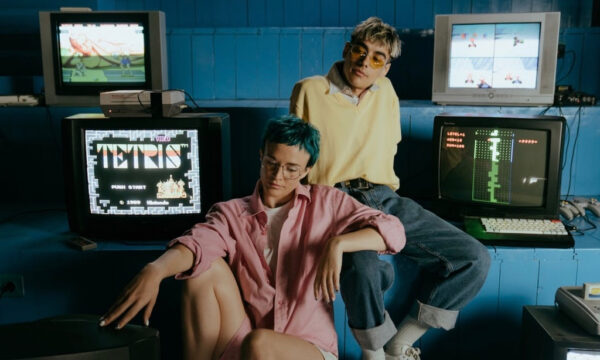Personalised content with AI image generation: From advertising to social media

Artificial intelligence (AI) is revolutionising the way visual content is created and personalised across industries. From targeted advertisements to tailored social media posts, AI-driven image generation has opened new avenues for creativity, engagement, and efficiency. The ability to craft visuals that align with user preferences and brand identity is transforming how companies communicate with their audiences. Applications like remove clothes app showcase the innovative potential of AI to explore advanced image customisation while emphasising the importance of ethical and responsible use. This article explores how AI image generation is reshaping personalised content, examining its opportunities, challenges, and future impact.
AI-generated content: A game changer in personalisation
AI image generation leverages advanced algorithms like Generative Adversarial Networks (GANs) to create visuals tailored to specific user needs. For industries reliant on engaging content, AI offers significant advantages in terms of cost, customisation, and efficiency.
Personalised advertising
AI-driven image generation is changing the landscape of advertising. Marketers can now craft ads that feel relevant to individual users by generating visuals based on browsing history, demographics, and behavioural data. For instance, an e-commerce platform can showcase products in a style and context that aligns with a user’s preferences, making the content more engaging and increasing the likelihood of conversion.
Social media content at scale
Social media thrives on fresh and visually appealing content. AI tools enable creators and brands to generate customised visuals in real time, ensuring their posts resonate with their target audience. By analysing user trends and preferences, AI can craft unique content tailored to specific platforms and audience segments.
Benefits of AI in content creation
AI image generation offers several advantages, especially in industries that rely heavily on personalised visuals to connect with audiences.
Cost efficiency
Producing high-quality visuals traditionally requires significant resources, including photoshoots, editing, and design work. AI-generated images eliminate much of this overhead by automating the process, making it faster and more affordable. Small businesses, in particular, can benefit from these savings, enabling them to compete with larger companies.
Flexibility and customisation
Unlike traditional stock images, AI-generated visuals can be tailored to meet exact specifications. Whether it’s adapting to a specific colour palette, creating region-specific imagery, or incorporating brand elements, AI ensures that every image aligns with the intended message and audience.
Increased engagement
Personalised visuals that reflect user preferences are more likely to capture attention and drive engagement. AI makes it possible to create content that feels uniquely relevant, fostering deeper connections between brands and consumers.
Ethical considerations in AI image generation
While the benefits of AI in content creation are substantial, ethical challenges must be addressed to ensure responsible use.
Privacy and consent
AI relies on vast amounts of data to generate images. It is essential for companies to obtain user consent and handle data responsibly. Misusing personal data to create visuals without permission can erode trust and damage a brand’s reputation.
Misuse of AI Tools
Applications like remove clothes app highlight the darker side of AI technology when misused. Such tools demonstrate the importance of developing and applying AI ethically, ensuring that it is used to empower creativity rather than harm privacy or dignity.
Challenges for AI-generated content
Despite its potential, AI image generation faces limitations that must be overcome for widespread adoption.
Authenticity concerns
AI-generated visuals may lack the authenticity of real-life photographs, particularly in contexts where human emotion and spontaneity are key. This can be a disadvantage in industries like journalism or fine art, where authenticity is paramount.
Quality and realism
While AI has made significant strides, imperfections such as unrealistic textures or proportions can still occur. Maintaining a high standard of quality is essential for AI-generated visuals to be effective.
The future of AI in personalised content
As AI technology evolves, its role in content creation will only grow, offering new possibilities for innovation and engagement.
Integration with emerging technologies
The combination of AI with augmented reality (AR) and virtual reality (VR) will redefine personalised content. Imagine interactive advertisements or immersive social media experiences where users can engage with visuals tailored to their preferences in real time.
Democratisation of content creation
AI tools are becoming more accessible, allowing small businesses, independent creators, and non-designers to produce professional-quality visuals. This democratisation fosters creativity and levels the playing field in industries dominated by large players.
Building trust through transparency
For AI-generated content to gain widespread acceptance, transparency is critical. Brands must be open about the use of AI in their visuals, ensuring that audiences understand how and why this technology is applied.
Conclusion: Shaping the future of visual storytelling
AI image generation is transforming personalised content creation, offering unparalleled opportunities for advertising and social media. By enabling cost-effective, customised visuals that resonate with audiences, AI is helping businesses forge stronger connections with their customers. However, with this power comes responsibility. Ethical considerations, transparency, and quality assurance must remain at the forefront of AI’s application in content creation.
As this technology continues to evolve, its integration into visual storytelling will only deepen, reshaping the way brands and individuals communicate in an increasingly digital world. When used responsibly, AI image generation promises to be a valuable tool in the quest for more engaging and personalised content.
The editorial unit
























Facebook
Twitter
Instagram
YouTube
RSS